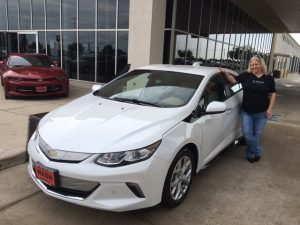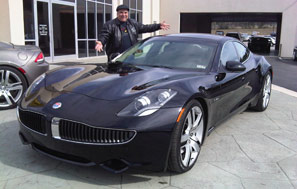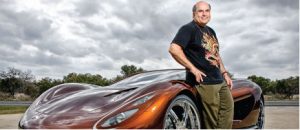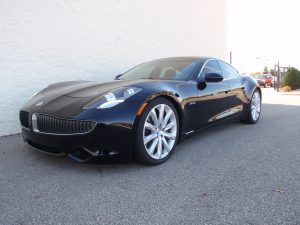Tag: Fisker Karma
Attracting Electric Cars
My wife, Nerissa, drives the Chevy Volt and loves it. She’s had it since 2012. Her electric car never fails, always looks great, contains what feels like enormous room inside, and rides smooth on our errands and trips. It’s a great car.
It’s so great that we just went and traded it in for a brand new 2017 Chevy Volt.
But not all electric cars are so cool or so reliable.
I owned the Fisker Karma a few years ago.
It was the opposite.
It was a nightmare to drive, though it was stunningly beautiful.
There were over a dozen things wrong with it, and the company.
Eventually the company went bankrupt, and I sold the car at a big loss.
Of course, Tesla is all over the news.
I called them when they announced their limited edition of 100 Roadsters around 2008.
But Tesla talked me out of buying one, saying they didn’t have service stations in Texas and wouldn’t be able to repair my car without transporting it to California or sending a technician to me.
Good thing I passed on that roadster, as even Elon Musk today admits that his first car was a disaster.
In a June 2016 Road and Track article online, Musk was reported as saying they had “no idea what we are doing,” and characterizing their original efforts as “completely clueless.”
Tesla is still getting lots of the media attention and I’m glad to see it.
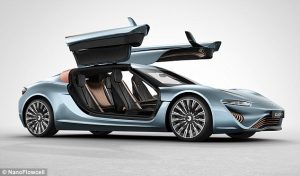
This German marvel runs on salt water, gets 960 hp and 373 miles to the tank, but will it ever be made?
Tesla’s new cars look hi-tech, dependable, and safe.
But I live in Texas, where I have seen the car on the road but have never test driven one. (I asked for a test drive and so far, over three weeks later, no one has replied.)
Besides, I’m not all that keen to get into another electric car, given my trauma with the Fisker.
And the most recent news was of a man killed while using the auto driving feature on his Tesla.
Apparently, the long range electric sports car is not yet out of the woods.
But all of this got me wondering about the origin of the electric car.
In an episode of Jay Leno’s great new TV show, Leno’s Garage, he drove an electric car from the early 1900’s that could get 90 miles on a charge.
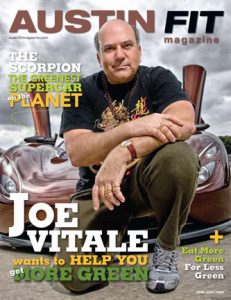
I promoted and invested in the Ronn Motors Scorpion, a stunning hydrogen sports car, only to see the company go bankrupt
What happened to it?
What happened to all the other early electric cars?
So I did some research.
Turns out in the late 1800s and early 1900s, the most popular car was the electric.
There were steam driven cars, which no one liked, and a few gas driven cars, which no one knew how to drive or fix.
But people were ready for something new, as the feces and urine filled streets where horse drawn carriages turned the roads into a sewer of slosh, was just too much and too unsanitary.
The electric was clean, dependable, and smart.
Or course, there were few cleared roads then.
And no driving schools.
And no battery chargers.
And few people had electricity.
And even fewer could actually afford the much more expensive electric car.
And a single battery cost more to replace than the Model T would cost to own.
For example, the price of a Detroit Electric car in 1914 was about $2,650. If you wanted to upgrade to the Edison Nickel Iron batteries, then the price went up about $600. At the same time, you could buy TWO NEW Model T’s for that same $600. (!)
It was an uphill battle for the electric car.
Of course, many tried to make it work.
Some entrepreneurial companies saw a business in an electric car taxi service.
The problem was, the cars could only drive about 10 miles before needing a charge or a battery replacement.
This was an incredible nuisance for the passenger — you could only go 5-10 miles away (!) – as well as for the driver and not to mention the cab company.
As a result, electric cars were made, but they weren’t sold easily: first because they were too expensive to buy, and second, they were too expensive to keep replacing batteries.
Most of the electric car companies went bankrupt.
And then Henry Ford enters.
Ford actually wanted to invest in the electric car, and make them.
He bought an electric car every other year for years. He and his wife loved them.
But the electric car companies created a coalition to block any competitors they didn’t like.
In short, many electric car companies got greedy and tried to create a monopoly.
Ultimately, they drove themselves off the pages of history.
The electric car simply wasn’t convenient or affordable at the time, and many electric companies were ruthless and competitive.
But that’s not all that happened to make the electric car lose power.
Thomas Edison inspires Henry Ford
It was actually Thomas Edison who threw the switch on making the gas powered car the vehicle of choice.
Edison, the king of all things electric, met Henry Ford at a now historic dinner in 1896.
The inventor listened to the car creator describe his idea of an ideal car: affordable, dependable, efficient, and requiring almost no maintenance.
In fact, Ford wanted his car to be low priced and maintenance free.
Edison heard all of this and slammed the table with his fist.
He then said these now historic words to Ford –
“Young man, that’s the thing; you have it. Keep at it. Electric cars must keep near to power stations. The storage battery is too heavy. Steam cars won’t do, either, for they require a boiler and fire. Your car is self-contained—carries its own power plant—no fire, no boiler, no smoke and no steam. You have the thing. Keep at it.”
Ford listened.
As a result, Ford moved the world with his new car, which was a public hit.
The electric car drifted out of awareness, except for a few failed attempts over the decades at resurrection, and the fossil fuel driven car won the race.
By 1919, virtually all electric car production was stopped, and the electric began to fade away.
It wouldn’t be until the 1970s, when gasoline prices hit record highs, that the mass public started to look for an electric car again.
I’m joining in that search.
A decade ago, when I met the people who make Panoz race cars (I have two of their street legal beauties), I told them if they make an environmentally friendly sports car, I’d buy it.
They haven’t yet.
When I heard of Ronn Motors inventing a hydrogen driven sports car, I ordered the first one, bought stock in the company, invested in the company, promoted the car on national television and on the front page of local magazines.
The company went bankrupt.
When I heard of a sports car that could run on sea water, I contacted the German company and asked if I could invest in it and order a car.
No one answered.
When Porsche made a one-of-a-kind 918 Spyder electric hybrid sports marvel, I asked the price.
They said $845,000. I passed (and almost passed out).
When BMW (a car maker I’ve always loved), developed the electric hybrid sports car they called the i8, I ordered one.
But after half a year of waiting, the salesman said it would be three more years before I would get my car.
I cancelled my order.
I could go on.
Today the marketplace is ready for an electric (or solar or sea water or any environmentally safe) car that is affordable, dependable, convenient, and attractive.
Tesla is working in that direction.
I’ll keep watching them, and other auto makers like Audi, Acura, and Nissan, to see who wins the next race. I may be a specialist in how to attract a new car, but the car also has to exist. 🙂
Meanwhile, we now have Nerissa’s 2017 Chevy Volt.
Let’s charge up and go!
Ao Akua,
PS – Some of my resources for this post include —
https://www.amazon.com/History-Electric-Cars-Nigel-Burton/dp/1847974619/
http://www.autoblog.com/2010/05/24/milburn-unveiled-1-000-ev-with-100-mile-range-swappable-batter/
http://www.lowtechmagazine.com/overview-of-early-electric-cars.html
http://aetherforce.com/electric-car-powered-by-salt-water-920-hp-373-milestank/
http://www.autobytel.com/hybrid-cars/car-buying-guides/best-electric-sports-cars-128503/
A Reason to Complain
I have good reason to complain.
Last January I bought a brand new electric car, the Fisker Karma. Same one singer Neil Young and actor Leonardo Dicaprio have. Same one actor Ashton Kutcher drives on the TV series, Two and a Half Men.
I was excited to contribute to the environment in a positive way with a sports car that uses solar energy and electric power to get me around. I was one of the first in the country to own one. I was one of a handful in Texas alone. Plus the car looks stunning. People stop and stare. The car is just plain sexy.
But I had problems with it since day one.
Before I even received it, it was recalled. The battery had to have a different clamp to prevent possible fires. Once I did receive it, there were numerous little issues. In fact, I listed 17 of them to show the service department.
For example, sometimes when I was driving it, traveling at sixty miles an hour on a country road, the car would turn off. Off! It would reboot itself in the middle of the drive. The first time it happened was pretty scary, as I didn’t know if I would lose control of the car. I didn’t, but gee whiz, that wasn’t comfortable at all.
Other times the car would be playing some of my favorite music, when suddenly and for no apparent reason, it would switch to a Latino AM station. Go figure.
And then there were the times when the car ran out of stored electric energy and rolled over to the gas powered generator, which makes more electric juice. At those moments, at least for a few minutes, the climate control in the car malfunctioned and the inside cabin heated up. I live in Texas. You rarely want the car to heat up. And when you do, you want it to be your idea.
Then there were the fires.
Two Fiskers caught on fire. Fires aren’t pretty. I saw the Texas wildfires. I saw Nerissa’s car on fire in 2011. It’s more than unsettling.
The last Fisker fire triggered a recall of all the cars. Over 2,000 of them. Again, I took mine in, and was shocked to learn the company decided to not give loaner cars anymore. I paid $100,000 for the car, they are recalling it and inconveniencing me and everyone else, and they won’t give a rental car to ease my pain? It was appalling.
After the last trip to the San Antonio dealership, I called them and reported the car still had two issues. They took notes and said they’d call me back.
They didn’t.
And the following day I received a snail mail letter saying that same dealership was surrendering their Fisker franchise. I’d have to go elsewhere for my repairs and service.
What the – ?
Then, at the end of last October, 16 Fisker Karmas caught fire and burned to the ground after being submerged in saltwater from Hurricane Sandy. They were all at dock in New Jersey, not delivered to any customers yet, but still.
And then the battery maker for the Fisker went bankrupt, forcing Fisker to stop making cars for a while.
Good lord! Will this ever stop?
All during this adventure, I complained.
I complained to Fisker.
I complained to the dealership.
I complained to the sales person.
I complained to the people who would marvel at seeing the car when I drove it and ask about it.
I complained to my friends, family, complete strangers, and myself.
I was so frustrated and discouraged that I started looking at other cars, wanting to trade in my Fisker Karma for a car — any car — I wouldn’t complain about.
Taking my own medicine, I finally stated a new intention, to have the Fisker fixed right once and for all, or to get into a new car that I would love and be issue free.
I was just tired of all the complaining.
And then it dawned on me.
My complaining wasn’t helping.
At all.
When you add the fact that I am on the board of directors for A Complaint Free World, a movement to stop us all from complaining, I was more than embarrassed.
I decided to start looking for the good in the car. The entire matter might not change, and the car might not become foolproof or fireproof, but I’d feel better.
After all, my complaining wasn’t changing anything and it was making me feel terrible.
It was time for a change.
I would never complain about the car again.
It was a simple but firm decision.
No more complaints.
“Don’t find fault, find a remedy; anybody can complain.” – Henry Ford
I had to run some errands right after that awakening. I charged up the car and took off. Everywhere I went, people asked me, “Gorgeous! What is it?”
I’d tell them. But I left off the complaints. I just focused on the 50 miles I can get on a charge, and the 250 more miles I can get with the gas generator making more electric energy. Plus the solar panels on the roof added a couple hundred miles a year. Sweet.
After running all my errands that day, I came home and noticed that I had one mile left on the stored charge. That meant my entire morning of running from place to place never used a drop of gas. I was suddenly proud of my car. I started to think it’s pretty cool after all.
“Any fool can criticize, condemn, and complain but it takes character and self control to be understanding and forgiving.” – Dale Carnegie
I contacted customer service at the Austin dealership to look at a couple final problems with the car. No one called me back for over a month.
What did that mean?
It meant my car didn’t need service!
After all, I’m not going to complain!
A friend of mine likes to complain. He defends his choice by saying, “Complaining adds color to life! I like it!”
But I also notice he rarely gets what he wants. And that might be the big insight.
“The pessimist complains about the wind; the optimist expects it to change; the realist adjusts the sails.” – William Arthur Ward
When we complain, we stay focused on the negative. As the Law of Attraction teaches, you tend to get more of what you focus on. As long as I saw the faults in my car, I attracted more of them to see.
Time to break that pattern.
After all, it’s all in your perception.
When you stop and rephrase your complaint as a positive intention, you morph your energies into a beacon of light, seeking out the positive.
When I praise my car rather than condemn it, the car seems to work better. And even if that weren’t true in some measurable way, I felt better driving it.
The thing is, my feeling better about the car actually seemed to make the car better.
The Fisker dealership in Austin finally called me back, and I took the car in for a software upgrade and service. They kept my car for two weeks, having to order parts and such.
When I went to pick up the car, it looked brand new. They had detailed it and made it look showroom ready. That was incredibly wonderful to see.
They also said every issue I had was resolved. That was a huge relief to hear.
I got in the car, drove it home, and didn’t notice any issues.
I had nothing to complain about.
At all.
Weeks have passed now and my car is working flawlessly.
I love my Fisker Karma!
It’s the best car ever!
What was the change here?
What really happened?
Lesson: My not complaining led to a situation where I have no complaints.
Think about it.
Complaining wasn’t helping and made me feel lousy; Complimenting what worked in my car made me feel great and seemed to help the car with its repairs.
The opposite of complaining is complimenting.
I know it sounds impossible and at least unlikely, but the moment I switched from complaining to complimenting my car, always keeping in mind my intention to drive a car that I love, it began to get better. Or maybe I got better first, and that influenced my car. Either way, it’s a win.
Before you complain, think of what you really want instead. Then speak your intention rather than your complaint. That simple step will cause you to move in a new and more positive direction. Focusing on complaints keeps you stuck in that lower energy; focusing on your intentions moves you into a higher energy. No one is asking you to overlook poor service or to deny your disappointment, but to instead focus on the service and outcome you actually want. There’s a huge difference in how you feel and in the results you get.
This post is a reminder to focus on what you want, not on what you don’t want.
Here’s the secret:
- Before you voice a complaint, stop.
- Ask yourself what you really want.
- Then voice your intention, not your complaint.
That’s the new formula for happy results.
Now don’t complain about it, either. 🙂
Ao Akua,
joe
PS — Just this morning I got in my car and it wouldn’t start. I sat there wondering what to do. I didn’t complain. Instead, I stated that I prefer the car start and run. I called Fisker roadside assistance. A friendly woman said she’d be glad to call a tow truck for me, but suggested I try rebooting the car first. She said it’s a big computer. Sometimes you have to re-boot it. She told me how to do it. I did. The car then started right up. No problem. All is well. And I didn’t complain once. 🙂

